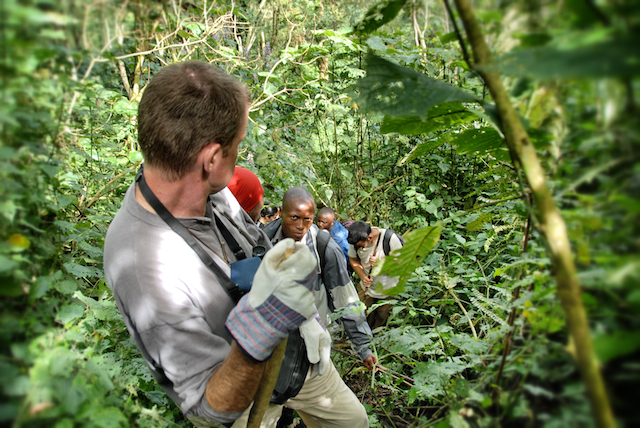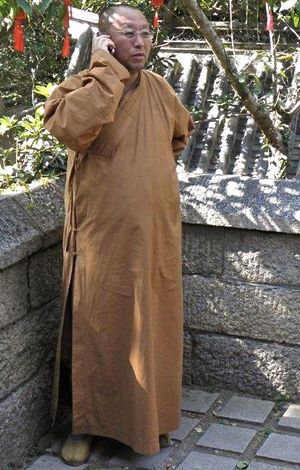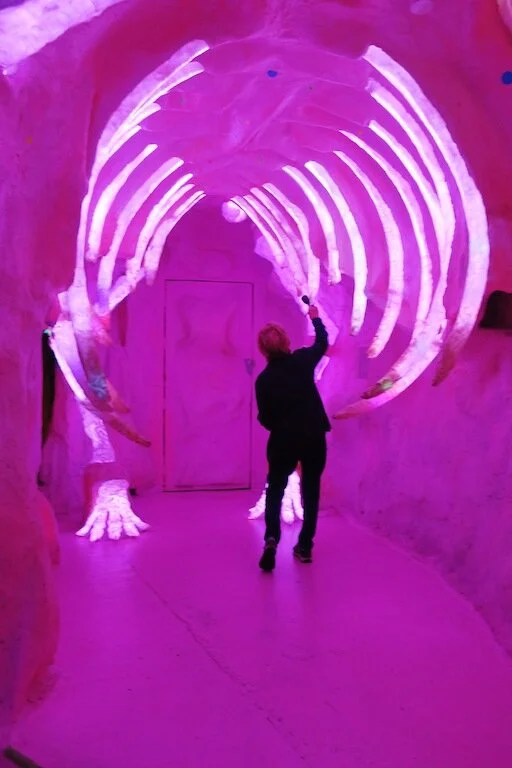Travel writer Fyllis Hockman was left speechless (well, almost) by a visit to Meow Wolf, an immersive art experience in Santa Fe, New Mexico.
Mauthausen Concentration Camp: Because turning away is never an option
Fyllis Hockman recalls a sobering visit to Austria’s Mauthausen concentration camp and why we should never forget.
Temazcal Sweat Lodge in Cozumel
by Fyllis Hockman
I am sweating profusely. My pores are so overrun with liquid that I fear I will float away in a river of my own perspiration. Since I am molting inside a sweat lodge, I figure I can’t go very far. Temporarily reassured.
The year is 1645. The most virulent strain of the Bubonic Plague has immobilized Edinburgh, Scotland, claiming the lives of more than half the city’s population. The area hardest hit: Mary King’s Close on High Street, a busy thoroughfare and lively 17th century street of pubs, shops and residences. Cries of suffering have replaced the friendly chatter, and the stench of death, the pungent aroma of tea and scones.
The place, the time, the horror have been resurrected as one of Edinburgh's most unusual attractions. Archaeologically and historically accurate, the alleys you walk upon, the rooms you visit, the stories you hear are real. This is not a recreation; it is a resurrection of what already existed so many centuries ago.
Beneath the City Chambers on Edinburgh’s famous Royal Mile, lies Mary King’s Close, a series of narrow, winding side streets with multi-level apartment houses looming on either side, which has been hidden for many years. In 1753, the houses at the top of the buildings were knocked down to make way for the then-new building. Parts of the lower sections were used as the foundation, leaving below a number of dark and mysterious underground alleyways steeped in mystery -- and misery.
Fire, Candle, Drum, and Stones: A Sensory Experience
The first thing I heard were sounds. Were they cymbals? Was it thunder? What did they mean? Were they supposed to mean something? But I didn’t have time to ponder before the next sensory assault -- this time different textures caressing my bare feet -- gravel to burlap, wooden slats to smooth slate to soft rug. Were the others experiencing the same thing?
And here’s the rub. We were all blindfolded, one hand on the shoulder of the person in front of us, as we moved about our mini-jungle. At first, I felt disoriented, out of control, with the added annoying question lurking in the back of my head: I am a travel writer, how am I supposed to take notes? But our Mayan guide propelled me back into the moment by explaining that when our sight -– our main sense in relating to the world around us –- is cut off, the others senses are expanded. And I had better start paying attention.
An Expert Hacker in Amazonia
I am a hiker. But at home, no one uses a machete to blaze the trail prior to walking on it as Souza, our Amazon guide, did, creating a path in the overgrown rainforest step by step. Slicing, swatting, swooping, chopping, no branch, bush, vine or twig was safe.
The hike was one of four daily activities during an 8-day adventure exploring Amazonia. Calling the Tucano, a 16-passenger riverboat, home, my husband and I traveled more than 200 miles along Brazil's Rio Negro. For daily excursions, we clamored aboard a small power launch which took us hiking, bird-watching, and village hopping, and on night-time outings that dramatized the allure of the river not experienced in any other way.
Meddling With Medieval Mysteries: Hiking through history in Southern France
Climbing up the wide circular stone staircase to our hotel room in the Chateau des Ducs de Joyeuse on the first night, I knew this would be a very different trip. I could just as easily be entering a medieval castle as a lodging facility -- and then I found out I was, though I suspect our modernized room was a lot less drafty than those of the lords and ladies who preceded us.
The experience, near Les Oliviers south of Toulouse, certainly set the tone for our Southern France Walking Through History tour—conducted, ironically, by a company called New England Hiking. As we hiked through, around, up and over one medieval village after another, traversing castles and countryside and learning about the Middle Ages of the 11th-14th centuries, we were immersed in history.
The dog's tail wagged impatiently. Lady -- a small, nondescript, white and brown mutt -- raced ahead to the oak tree, sprinted back and forth, nose thrust into the ground, then triumphantly started digging with gusto. Looking up with an air of satisfaction, Lady was handsomely rewarded before her master carefully scraped the loosened dirt with his pick. The five visitors observing the ritual looked on expectantly. Using his fingers to gingerly explore further, the truffle hunter delicately removed his treasure: a large, walnut-size white truffle, one of the epicurean riches of Alba, a gem of a city in the Piedmont region of northwest Italy.
Okay, let me just say that up to now the closest I had come to a truffle was in a Whitman’s Sampler box and it was covered with chocolate. And I’m pretty sure it had never been routed out by a dog. This truffle hunting is a respected art form in Alba, and proper training of the dogs is at its heart. Any breed can aspire to the job, but selection depends upon its resume. It must have a good nose (a trait the dogs presumably share with the region's prestigious wines), and trainers can ascertain that after three days. Once the dogs show promise, they attend the Barot University of Truffle Hunting Dogs, in operation since 1880, for two to three months of specialized training. Graduate school is optional.
Now let's talk truffles. Sure, to the uninitiated, it may just be a foul fungus, but to the gourmand, it represents the ultimate in gastronomic delights. It is judged by size, color, shape, texture, aroma - some would say offensive olfactory onslaught; others, fragrance of the gods -- and its overall perfection. There's a lot to be said for this smelly little mushroom.
A Wild Ride in the Dominican Republic
First things first. No water slide at any man-made water park will ever be the same again for me –- not after cascading down natural waterfalls in the Dominican Republic.
Vietnam’s Ha Long Bay: Surreal Doesn’t Begin To Do It Justice
Descending the steep, narrow plank, inch by inch, hand over hand along the long pole, I thought: “This better be one hell of a cave!” Exploring the other-worldly interior of Hang Trong Cave was to be one of many surreal experiences I was to have traveling along Ha Long Bay in northeast Vietnam.
In the 1992 movie Indochine, credited with putting Ha Long Bay on the map, Catherine Deneuve describes it as “the most remote outpost of Indochina.” Today, the bay still retains that end-of-the-Earth, Lord-of-the-Rings-on–water quality.
Heels down. Toes out. Squeeze with calves, not knees. Lighten up on the reins. Sink your butt into the saddle. So began my first riding lesson at the Arizona Cowboy College in Scottsdale which was followed by instructions in grooming, shoeing, advanced riding techniques, and roping. And this was just a one-day primer to what other “city slickers” experience in their six-day cattle drive at the College -- but more on that later.
by Fyllis Hockman
"It can be a difficult journey. If you have a cold, cough or sniffle, don’t even bother lining up. Good hiking boots and a walking stick are a must. Bring plenty of water. Be sure to stay at least 25 feet away. Remember these are wild animals. If we need to carry you out, that will cost an extra $300."
I was already intimidated by the pre-trek briefing and we hadn’t even started on our mountain gorilla expedition, which was part of a 16-day tour to southwestern Uganda sponsored by ElderTreks. The 25-foot rule, I learned, was for both their protection and ours. Sharing 98.4 percent of our DNA, the gorillas are very susceptible to human-borne illnesses. We were carriers and they had to be protected from us. They were wild animals and we had to be protected from them. A fair quid pro quo. Thus, eight humans a day are allowed to visit a gorilla group for no longer than an hour. Works for us; works for them.
 Gorilla trekkers ascending one of many steep climbs.
Gorilla trekkers ascending one of many steep climbs.
This is not exactly a drive-by photo op. With a vigorous trek of 1-7 hours, depending upon where the gorillas are that day, you have to REALLY want to see them. But even with visitation restricted to an hour, it is usually well worth the effort.
 Garifuna healer, Erdangela Polonio. Buyei, Belize. Picture this. The large thatched-roof, sand-carpeted temple was barren except for the obviously ill child curled up in the single cot by the wall. An old woman could be heard chanting from within her sacred chamber, candlelight flickering around the corners of the sheet separating her from the long hall. Her healing incantations, I later discovered, were addressed to the spirits who may have had reasons of their own to inflict the child.
Garifuna healer, Erdangela Polonio. Buyei, Belize. Picture this. The large thatched-roof, sand-carpeted temple was barren except for the obviously ill child curled up in the single cot by the wall. An old woman could be heard chanting from within her sacred chamber, candlelight flickering around the corners of the sheet separating her from the long hall. Her healing incantations, I later discovered, were addressed to the spirits who may have had reasons of their own to inflict the child.
Intrigued? Okay, here’s the story. Spirits are big in the Garifuna community of Belize -- which by the way is a Central American country that thinks it’s a Caribbean island. Garifuna, you say? Never heard of them. Part of the melting pot civilization which comprises Belize, the Garifuna share the land with Creole, Mayan, Spanish, Mennonite, Chinese and other neighbors but their language, customs, foods and religion are unique. So are their spirits.
Now there are only about 7000 Garifuna currently in the country, but the spiritual population is a lot larger. “Our ancestors are all about us,” Lawrence, our guide, told me: “Just as we must eat and drink to live, so must they be nourished as well.” This is something the ancestors take very seriously.
So if they perceive they are being neglected, the dead return, most often through dreams, to remind the living that they are in need of nourishment. If this message goes unheeded, the spirits may get angry and make a family member sick. The ancestors do not take kindly to being ignored.
 Relais San MaurizioAlright, we all know by now that drinking red wine is supposed to be heart-healthy. So then, shouldn’t slathering a glass of Merlot on your body be good for the skin? Such is the theory, sort of, at the Caudalie Spas. There are currently only four in the world, and I am luxuriating in a ‘vinotherapie’ massage in the Relais San Maurizio Hotel in the heart of the Piedmont region of northwestern Italy. The vintage is being absorbed into the skin rather than ingested into the bloodstream.
Relais San MaurizioAlright, we all know by now that drinking red wine is supposed to be heart-healthy. So then, shouldn’t slathering a glass of Merlot on your body be good for the skin? Such is the theory, sort of, at the Caudalie Spas. There are currently only four in the world, and I am luxuriating in a ‘vinotherapie’ massage in the Relais San Maurizio Hotel in the heart of the Piedmont region of northwestern Italy. The vintage is being absorbed into the skin rather than ingested into the bloodstream.
As is also true in Bordeaux, France, Rioja, Spain and New York City (Hmmm; don’t exactly think of the latter as a major wine-producing area…), here wine is king! And the appreciation of its many attributes – which, as those who know me can attest, I try to experience as often as I can – is a venerated practice. So it seems appropriate that the consumption of wine extend beyond traditional imbibing.
by Fyllis Hockman
 As a travel journalist, I’m fortunate enough to travel the world, reveling in a multitude of life-enhancing experiences that I would never otherwise be exposed to. I then get to come home, kicking and screaming, and write about them, usually dispensing with facts and focusing instead on my observations. After a recent trip to Shandong Province in China, I had even more observations than usual and was motivated to record them before even thinking about the article I would ultimately write. So here I’ve blended the personal with the professional—and they are indeed more personal than professional—in the hopes of sharing with you my private reactions to that recent trip.
As a travel journalist, I’m fortunate enough to travel the world, reveling in a multitude of life-enhancing experiences that I would never otherwise be exposed to. I then get to come home, kicking and screaming, and write about them, usually dispensing with facts and focusing instead on my observations. After a recent trip to Shandong Province in China, I had even more observations than usual and was motivated to record them before even thinking about the article I would ultimately write. So here I’ve blended the personal with the professional—and they are indeed more personal than professional—in the hopes of sharing with you my private reactions to that recent trip.
Once a country of thousands upon thousands of bikes, gray-green clothes and propaganda signs everywhere promoting Mao Tse-Tung, the glories of socialism and China’s one-child policy, China now boast 6-lane highways full of traffic, bright Western high-fashion dress and advertising promoting Sony to Gucci to Prada to Ferrari to KFC and Starbucks, of course, and even 7/11s. What not long ago were farming villages are now bustling urban metropolises with legions of skyscrapers and high-priced condominiums . China has not only come into the 21st century but is forging ahead of most other countries into the next.
After 10 days and nights with our 30-year-old young guide and mother of a three-year-old, we became such close friends that we were walking down the streets with our arms around each other. A strange and wonderful relationship forged so quickly.
Many Chinese prefer drinking just plain hot water to anything else – and everything is served warm, from water to soda to beer – especially beer.
Despite all of China’s progress, Western toilets have not really caught on except in the better hotels. Everywhere else, at attractions and restaurants, treadle toilets are the norm—more often than not, without toilet paper. You think you get used to them—but you don’t really.








